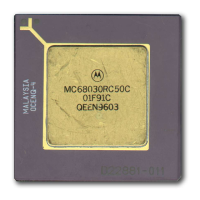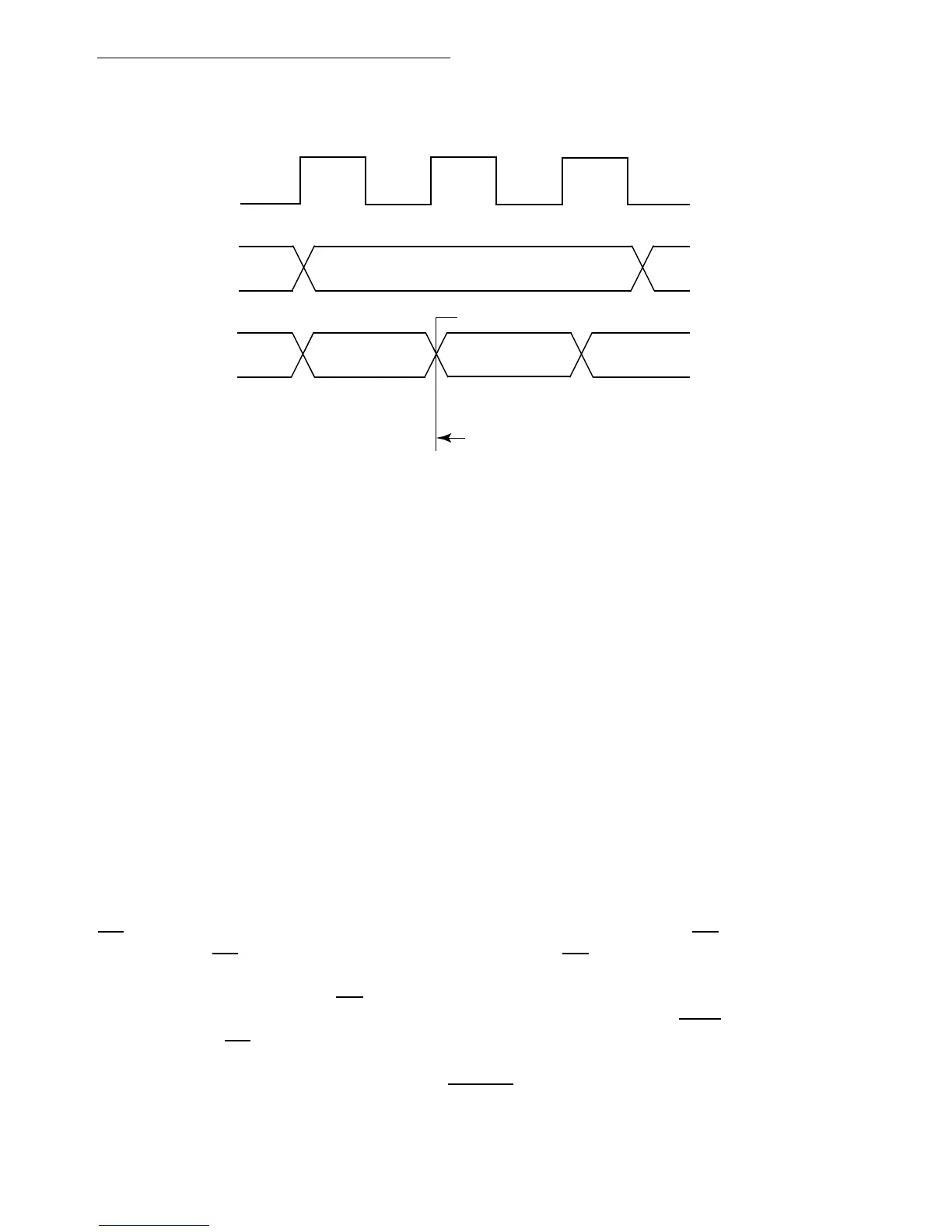Bus Operation
7-98 MC68030 USER’S MANUAL MOTOROLA
7.7 BUS ARBITRATION
The bus design of the MC68030 provides for a single bus master at any one time: either the
processor or an external device. One or more of the external devices on the bus can have
the capability of becoming bus master. Bus arbitration is the protocol by which an external
device becomes bus master; the bus controller in the MC68030 manages the bus arbitration
signals so that the processor has the lowest priority. External devices that need to obtain the
bus must assert the bus arbitration signals in the sequences described in the following
paragraphs. Systems having several devices that can become bus master require external
circuitry to assign priorities to the device so that, when two or more external devices attempt
to become bus master at the same time, the one having the highest priority becomes bus
master first. The sequence of the protocol is:
1. An external device asserts the bus request signal.
2. The processor asserts the bus grant signal to indicate that the bus will become avail-
able at the end of the current bus cycle.
3. The external device asserts the bus grant acknowledge signal to indicate that it has
assumed bus mastership.
BR
may be issued any time during a bus cycle or between cycles. BG is asserted in
response to BR
; it is usually asserted as soon as BR has been synchronized and
recognized, except when the MC68030 has made an internal decision to execute a bus
cycle. Then, the assertion of BG
is deferred until the bus cycle has begun. Additionally, BG
is not asserted until the end of a read-modify-write operation (when RMC
is negated) in
response to a BR
signal. When the requesting device receives BG and more than one
external device can be bus master, the requesting device should begin whatever arbitration
is required. The external device asserts BGACK
when it assumes bus mastership and
Figure 7-58. Bus Synchronization Example
S0 Sw
EXTERNAL WRITE
WRITE TO D. CACHE D. CACHE READ
MOVE. L D0, (A0)
NOP PREVENTS EXECUTION OF SUBSEQUENT
INSTRUCTIONS UNTIL MOVE. L D0, (A0)
WRITE CYCLE COMPLETES
MOVE . L (A0), D1

